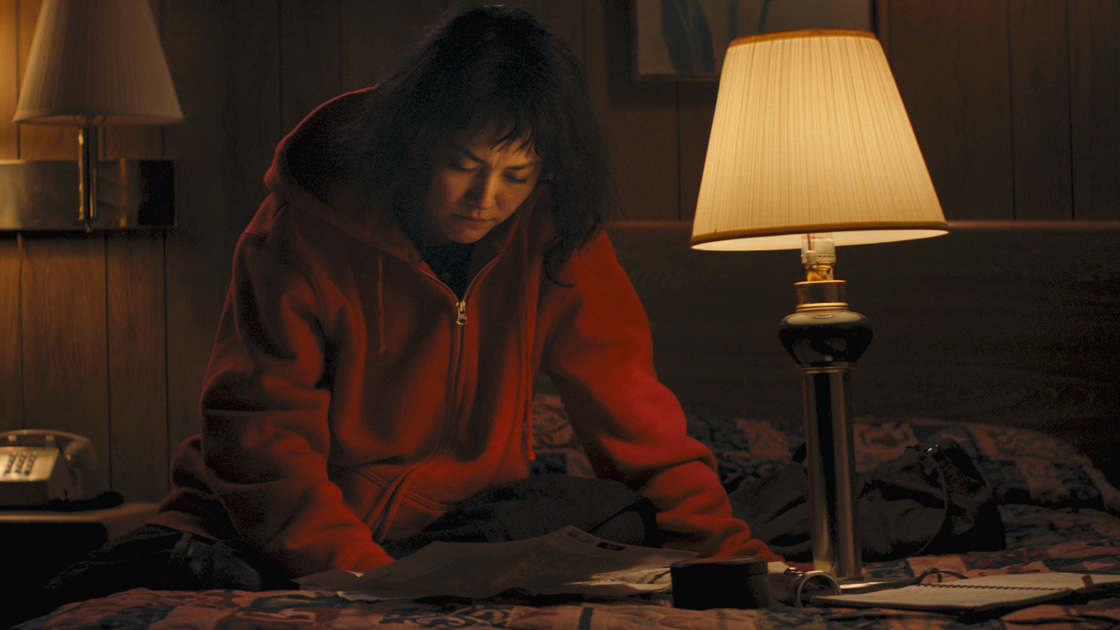 Back to selection
Back to selection
Five Questions with Kumiko, The Treasure Hunter Directors David & Nathan Zellner
 Kumiko, The Treasure Hunter
Kumiko, The Treasure Hunter David and Nathan Zellner are longtime stalwarts of the Sundance Film Festival, and the American microbudget film scene in general, carving out a niche for themselves over the last decade-plus as purveyors of a uniquely strange brand of Americana. Their feature work (including 2012’s haunting Kid-Thing) and their idiosyncratic and unforgettable shorts (Sasquatch Birth Journal 2, don’t worry, lives up to its title) have long found the Zellners fascinated with contemporary American folklore and fairy tales, and their newest film, Kumiko, The Treasure Hunter, is no exception.
Based on the true story of a Japanese woman who traveled from Tokyo to Minnesota in search of the fictional money left buried at the end of Fargo, Kumiko finds the Zellners working with actress Rinko Kikuchi (Pacific Rim, Babel). The film premieres in US Dramatic Competition today at Sundance.
Filmmaker: Kumiko, the Treasure Hunter was inspired by an incredible true story. When did you first hear about this story, and what made you think it was ripe material for a feature adaption?
Zellners: We first heard about it right after it happened in 2001. What little information there was became contradictory depending on where it came from, and it quickly evolved into its own urban legend of sorts. We were interested in how the legend took a life of its own, based around someone driven to find truth in something that doesn’t exist.
In the following years, more and more details of the actual story surfaced but we’d preferred the mystery of the legend. We also liked this notion of a treasure hunt, which is something so antiquated in today’s world. The age of exploration has long since been over, there’s no longer uncharted lands, everything is mapped out with satellite imagery; there’s not this sense of mystery that there once was.
We liked this idea of a contemporary quest across the globe for a mythical fortune.
Filmmaker: What was the casting process like? At what point did Rinko Kikuchi come on board, and what was it about her that convinced you she was right to play Kumiko?
Zellners: Kumiko was a demanding role both emotionally and physically, and we needed an actress who was able to handle these extremes through a subtle, controlled performance. She’s a unique character but still needed to be human and relatable so that the audience could be engaged with her quest.
From Rinko’s performance in Babel we knew she would be perfect for the role. She also had a small part in the Japanese film Funky Forest, which we’re big fans of. We first met her in 2008 and hit it off — she has similar taste and sensibilities, and quickly dialed into the tone we were going for. She’s incredibly hardworking but also has a great sense of humor, and was a lot of fun to work with, which was essential since she’s in every scene.
Filmmaker: Can you talk a bit about the contrast between Tokyo and Minnesota? How did you work to express the differences between these two landscapes visually throughout the film?
Zellners: Because of the inherent contrast it was easy to embrace their differences. We were very particular in terms of what we did and didn’t show within each environment, but the contrasts came naturally from that. With the landscapes themselves playing such a crucial part, it was necessary to shoot everything on location and out in the elements, which helped ground this fable in the natural reality of each setting.
To give this character piece a sort of epic feel, we shot in anamorphic, which was the biggest technical and artistic decision/challenge in embracing the vastness of the winter countryside vs. crowded urban Japan.
Filmmaker: Both this film and your previous works feature characters with a fluid perception of fiction and reality. What is it about this theme that fascinates you?
Zellners: When pointed out, we do see a trend with some of our work, but it’s not a set agenda that we discuss or analyze much. We just usually go with our gut as to what feels right, and that blurred line often feels right. Maybe it’s also because we appreciate Herzog’s idea of “ecstatic truth.”
Filmmaker: This project is larger in scope than your previous two features. As you continue to make bigger and bigger films, what lessons from your days of microbudget filmmaking have you carried with you?
Zellners: To prepare as much as possible, know exactly what we want, but be open and willing to adapt to unforeseen circumstances or new ideas that present themselves.
To not waste people’s time or money. It was a tight shoot with limited financing, extreme weather conditions, filming on two continents with almost entirely different crews, but it was essential that we along with our producing partner Chris Ohlson kept things on schedule and on budget, which thankfully we did.
To be nice and appreciative of others’ commitment to your work. We work incredibly hard and expect the same from those on our team, but we also like to run a fun set that people enjoy being a part of.
